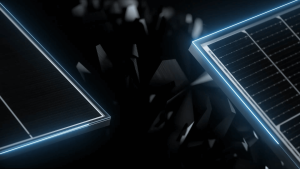Overview of Solar Panel Efficiency
Solar panels, a cornerstone of renewable energy solutions, have garnered significant attention due to their ability to convert sunlight into electrical energy. The efficiency of these panels is a critical factor that determines their energy output. Efficiency refers to the proportion of sunlight that the solar panel can convert into usable electricity. Typically, most commercial solar panels have an efficiency rate of 15% to 20%. However, premium models can reach efficiencies of over 22%.
Energy Output: Key Metrics
When discussing the energy output of a solar panel, it's essential to consider several key metrics. These include:
- Power Rating: Measured in watts (W), this indicates the amount of electricity a solar panel can produce under ideal conditions.
- Energy Production Per Day: This depends on the power rating and the amount of sunlight the panel receives, usually measured in kilowatt-hours (kWh).
- Geographical Location: Solar energy production varies depending on the location's solar irradiance levels and the number of daylight hours.
- Panel Size and Type: Larger panels or those made with more efficient materials like monocrystalline silicon generally produce more energy.
Solar Panel Output Calculations
To calculate the average energy production of a solar panel in a day, one must consider the panel's power rating and the average sunlight hours. For instance, a 300W solar panel receiving 4 hours of sunlight per day would produce:
Energy Production=Power Rating×Sunlight Hours Energy Production=300�×4 hours=1200 Wh/day or 1.2 kWh/day
Factors Influencing Efficiency and Output
Several factors influence the efficiency and output of solar panels:
- Material Quality: Higher quality materials like monocrystalline silicon offer better efficiency.
- Temperature: Solar panels operate less efficiently in very high temperatures.
- Angle and Placement: Proper installation angle and placement without shading can maximize sunlight exposure.
- Age: Efficiency decreases slightly over the lifespan of the solar panel, typically 25-30 years.
Cost and Budget Considerations
Investing in solar panels involves initial costs and long-term savings. The cost of solar panels has decreased significantly over the years, making them a more viable option for many. When planning a solar installation, consider:
- Initial Purchase Price: Depending on the type and size of the panel.
- Installation Costs: Includes labor and additional equipment like inverters and mounting systems.
- Maintenance Costs: Generally low, but occasional cleaning and inspections are recommended.
- Savings on Energy Bills: Reduction in electricity costs can offset the initial investment over time.

Conclusion
Solar panels offer a sustainable way to produce energy, with their efficiency and output being central to their effectiveness. Understanding these aspects, along with cost considerations, is crucial for anyone considering solar energy. For more detailed information on solar panel energy production per day, you can explore this resource.